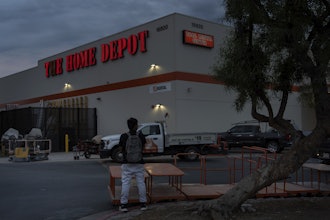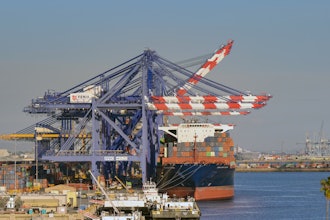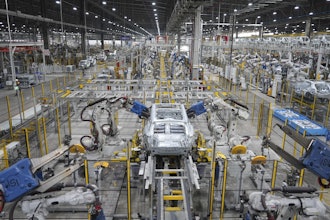Managing service parts inventory can be a daunting task for an enterprise with tens of thousands of products in hundreds of locations. It can be equally challenging to analyze and respond to changing market conditions that influence inventory pricing.
Most failed product repairs — upwards of 50 percent — are attributed to poor part availability. The world’s most successful companies are investing in service parts planning technologies to improve their often sub-optimized service supply chains to ensure part availability levels are consistently higher than 95 percent.
Having the right parts in the right place at the right time is critical to a company’s ability to maximize uptime of the product they sell — think planes, trains, heavy medical equipment, construction equipment, etc. Maximizing uptime of these revenue generating assets is what customers care about most, and if the equipment is down, the manufacturer is losing money and pushing customers away. If equipment is down on a regular basis due to poor part availability, the customer will go off brand when they make their next purchase, killing the manufacturer’s high service margins.
For these reasons, inventory and pricing management software are two key revenue levers for the aftersales supply chain. Forty-eight percent of companies that have ‘effective’ supply chain visibility tools like these in place outperformed those that don’t. Yet many companies still employ ERP systems or rudimentary tools like Excel spreadsheets and simple ‘cost-plus’ formulas to manage service parts inventory and define price.
In 2017, as competition grows in the supply chain, these tools will be pivotal in helping companies achieve success.
The shift to cloud-based technology will continue.
The supply chain industry as a whole has been notoriously slow to embrace the cloud; some companies still use ‘old school’ methods like Excel spreadsheets for service parts pricing, for example. The reluctance may be due to lingering concerns about continuity and security, or a greater comfort running applications like human resource technologies that don’t really pertain to the more competitive side of their business.
Since agility has become central to business success, however, the cloud has become critical for the supply chain – and its adoption is growing at a rate of 28 percent each year. It allows organizations to share information that can aid in a more efficient workflow. In addition, the cloud offers huge cost savings for companies that don’t have the resources to operate infrastructure like ERP systems on-site. Supply chain players will need to embrace the full potential of cloud technology or risk falling even further behind in 2017.
Manufacturers specifically have the opportunity to focus on the often sub-optimized service segment of their business. While SaaS and cloud adoption will continue overall, the rate of adoption in after-sales service organizations will be greater as companies increasingly look in this direction for opportunities to increase both top and bottom line performance. Post-sales service delivers attractive profit margins, which can truly be improved via cloud-based solutions.
Predictive analytics will finally be mainstream.
Predictive analytics enables real-time decision-making and forethought on both strategy and performance and is therefore the next stage in supply chain business intelligence. Admittedly, adoption has been slow. Bringing in a whole new data infrastructure is both costly and time intensive — from investing in data collection and integration to recruiting and training staff.
Nevertheless, predictive analytics will go mainstream in the supply chain and aftersales market. In fact, the industry is projected to be worth more than $9 billion by 2020. This signals that although adoption has been a ‘slow burn’, predictive intelligence will take its place as a mainstay in supply chain technology within the next year — especially as the category continues to rely on forecasting models and trend analysis.
Wearables in the supply chain have a lot of potential — but real obstacles remain.
Often viewed as ‘consumer-facing,’ wearable technology presents a huge B2B opportunity. Seventy-five million wearables will permeate the workplace by 2020. And since this technology is often more mobile than laptops or tablets – and provides sensory features that other technologies don’t — it can be uniquely optimized across the supply chain. Technologies that are ‘wearable’ remove the friction that exists with handheld devices, enabling an easier and more effective workflow.
Granted, barriers in wearable technology do remain. Battery capacity, in particular, has a long way to go. However, as investments and innovations continue to grow, wearable technology is poised to be a fixture in the supply chain workforce of the future.
Wearables will positively impact field service operations, in particular. For manufacturers, the field service technician is often the ‘face’ of the brand, interacting most frequently with customers. The level of service they provide directly impacts customer satisfaction and retention, as well as brand perception. Today’s field service technicians can be empowered by wearable technology to respond faster to customers with pressing needs with information most relevant to the task at hand. All of this is critical to delivering exceptional customer experiences — a key competitive differentiator.
Driverless vehicles and drones play a bigger role in the supply chain.
The role of the human operator in the supply chain will diminish, in part due to driverless cars and drones that stand to be an extremely disruptive technology for the industry
For example, beyond the popular headlines regarding home delivery, drones offer unique benefits. They monitor the performance of plants and remote operations facilities and can provide real-time data on the progress of upgrades or maintenance being done by field service teams. Driverless cars and trucks also offer serious safety benefits. It is projected that they can reduce traffic fatalities by up to 90 percent — while also providing enhanced data in real time on critical functions like deliveries and vehicle functionality.
Hurdles certainly remain. Design, functionality, cost and regulation all need to be better defined and improved. But with 10 million self-driving cars set to hit the road by 2020 and the drone industry projected to be worth $127 billion in the same year, the backing and interest is clearly there to make driverless cars and drones a tangible supply chain tool in the year ahead.
Gary Brooks joined Syncron in 2015 as Chief Marketing Officer. With 20 years of marketing experience, Brooks is a revenue focused B2B marketing executive who believes in qualitative work with quantitative results to deliver breakthrough revenue performance.






















